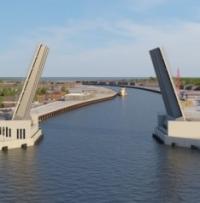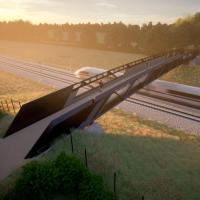The sensors measure four weather factors: wind speed, dew point, temperature, and relative humidity. When these factors converge at certain points, ice accretion can occur on the cables and towers of the cable-stayed bridge.
"You tend to get squalls driving through up the Forth, generally on a westerly wind. What happens is these squalls normally take about 15 minutes to come through and pass, and what we've seen is ice forming within that 15 minute period, sticking to the cables. Once the squall has passed through in certain conditions it starts to fall off the cables relatively quickly, sometimes within 10-15 minutes after the squall has passed," Tracey explains.
The sensors will allow for a better understanding of the conditions in which ice accretion occurs.




